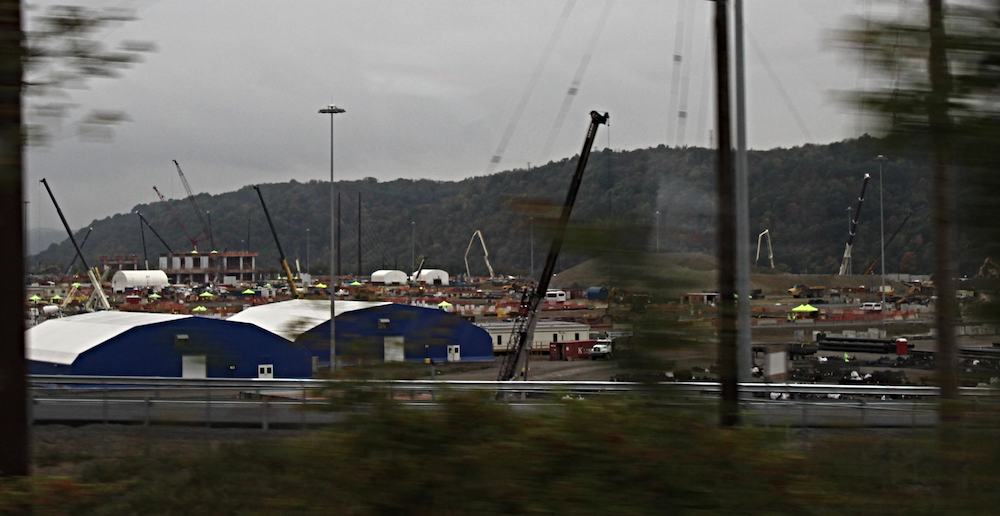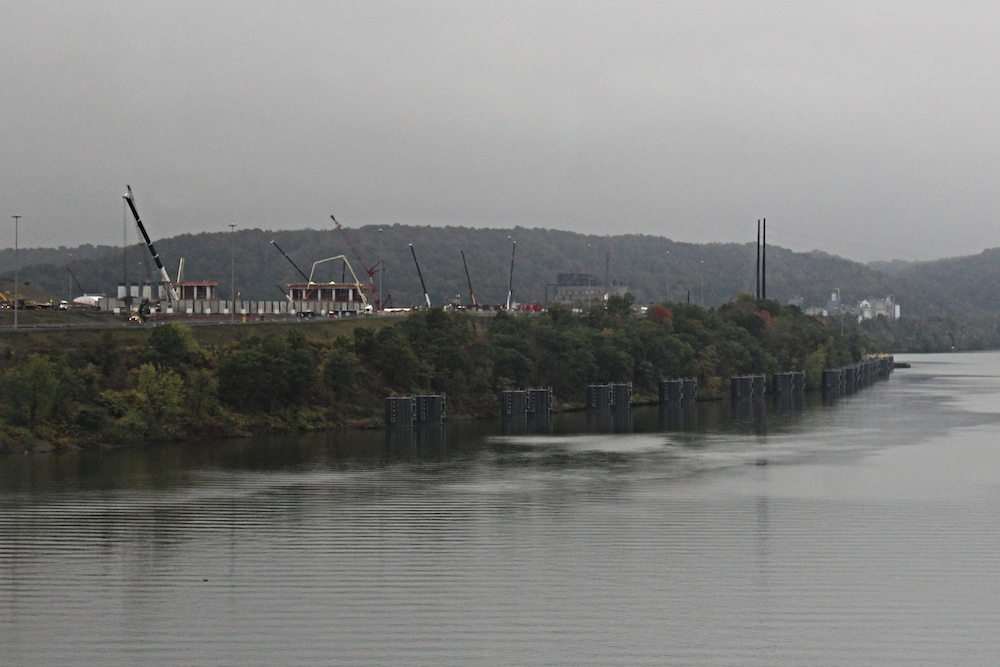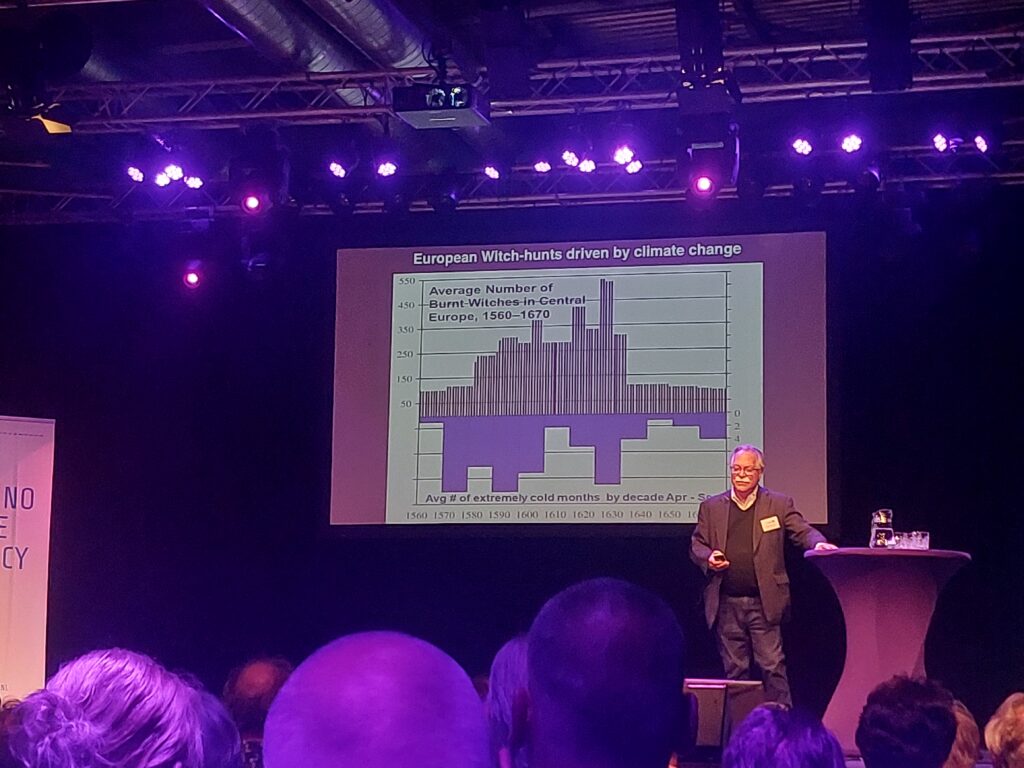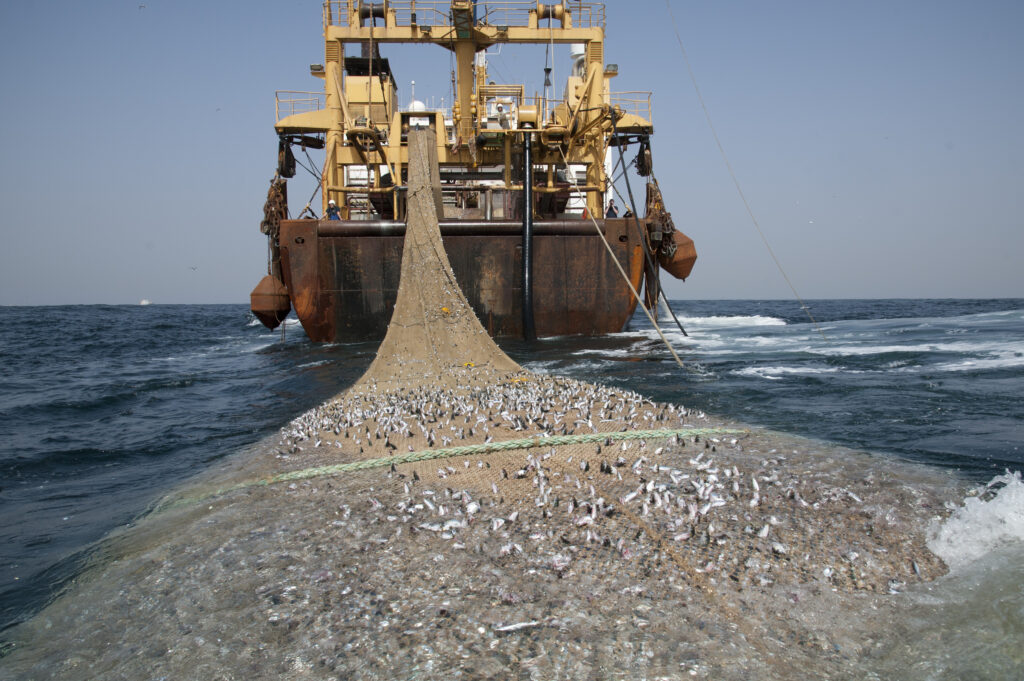Fueled by fracking in the region, petrochemical and plastics projects in the Ohio River Valley are attracting tens of billions of dollars in investment, but as plans for this build-out hit the drawing boards, signs already are emerging that state regulators are unprepared for this next wave of industrialization. And the implications of their inexperience could mean major threats to the region’s health and environment.
One of the projects currently underway, an underground natural gas liquids (NLG) storage site — designed to support the construction of several huge petrochemical complexes — is undergoing review by state regulators who have little experience with NGL storage facilities of its size.
“We had to juggle a lot of regulatory input in a relatively undefined setting since there are few regulations in Ohio, and that really goes for Pennsylvania and West Virginia as well,” Jonathan Farrell, a project manager with Civil and Environmental Consultants, told attendees at a petrochemical industry conference on June 18.
That lack of well-established state regulations harkens back to the early days of the shale gas rush, when state regulators struggled to keep up with the emergence of hydraulic fracturing (fracking) and horizontal drilling technologies. The rush to drill while safeguards were still being designed and implemented led to inadequately treated toxic waste being dumped into drinking water supplies for millions of people and problems with radioactive waste that continue to this day.
Dreams of a New Petrochemical Corridor
Shell’s ethane cracker petrochemical plant under construction on the banks of the Ohio River. Credit: Ashley Braun, DeSmog
Today, the petrochemical industry is dreaming big about prospects for manufacturing plastics, styrofoam, vinyl, chemicals, and fertilizers from cheap ethane and other natural gas liquids from the Marcellus Shale — marketed as currently the cheapest in the world.
The goal? To build a new petrochemical corridor in Pennsylvania, Ohio, West Virginia, and the surrounding region, one second only in size to the Gulf Coast’s — and one that could bring along with it the public health and environmental impacts that have given rise to that region’s reputation as a “cancer alley.”
“I think the magnitude of some of these projects that we’re talking about here are hard for a lot of us and a lot of our communities to wrap their head around,” Chad Riley, CEO of The Thrasher Group, an oil and gas field and pipeline services firm, said at the June 18-19 conference. “I really think that this region lacks a bit of an understanding about what the potential could be here.”
Fracking for Plastics
Shale drillers in the Marcellus and Utica have long talked up the potential profits to be made from drilling for “wet gas,” or wells that produce large volumes of natural gas liquids like ethane, propane, and butane. Those liquid fossil fuels offer additional sources of revenue, making the shale drilling industry better able to cope with depressed prices for natural gas, which is mostly methane, that the wells primarily produce.
For the shale industry, the need to create demand for those products is fueling the push to create new petrochemical and plastics plants that can buy up the liquids coming from fracked wells. The Appalachian region currently produces roughly a third of the domestic supply of NGLs, or roughly a million barrels a day.
From the presentation of Justin Carlson of East Daley Capital Advisors at the DUG East conference in June 2018. Credit: © 2018 Sharon Kelly
“It’s a new too big to fail,” Justin Carlson, vice president of East Daley Capital Advisors and a former senior manager at Platts, said at DUG East, a shale drilling industry conference from June 19-21. He was describing the pressures created by barriers like a lack of pipelines and purchase contracts which are emerging between Marcellus drillers and buyers for their natural gas and liquids.
“What do you do with the C3+ [natural gas liquids]?” he asked. “Where do you put it?”
“If you have insufficient takeaway for the liquids,” added Macgill James, vice president of supply strategy for natural gas and propane distributor UGI Corp, “then production is going to be shut in.”
In other words, if no one is ready to buy that ethane, propane, and butane, drilling companies will have to slow their plans for shale drilling and fracking in states like Pennsylvania, Ohio, and West Virginia.
State officials in the Ohio River Valley have been pushing for the construction of a petrochemical and plastics belt overtop the decaying rust belt, tempted by big promises of jobs and revenue.
Earlier this year, the state of Pennsylvania sponsored an IHS Markit report that concluded the Marcellus and Utica shale regions could produce enough of those liquids to supply up to five of the petrochemical complexes known as “ethane crackers,” where ethane is heated and “cracked” (or broken down) into ethylene, a feedstock that can be turned into plastics and other synthetic products and chemicals. Tens of billions of dollars’ worth of expansions in Texas and Louisiana are also planned.
Those investments would promote drilling and fracking for decades, independent from any potential transition to renewable energy.
Pollution from petrochemicals is already a major issue, Food and Water Watch noted in a report last year on the coming build-out. “In 1999, when Houston’s ozone levels were the highest in the nation, the state of Texas conducted several studies that found large industrial leaks,” that report found. “The worst originated from cracker plants producing ethylene and propylene.”
While investments from China are currently facing delays due to the recent trade disputes and corruptions issues (as DeSmog recently reported), many analysts are predicting that those issues will be resolved and that the buildout will ultimately press forward because a significant portion of the broader plans outside of West Virginia are not linked to China.
“We could really be in trouble,” Dr. Sandra Steingrabber, ecologist and anti-fracking organizer, told DeSmog. “It’s not about energy independence, it’s about making more junk that nobody needs.”
A Gas Station for Plastics Makers
Turning shale gas liquids into plastics and petrochemicals requires the construction of massive ethane crackers, like the $6 billion petrochemical plant that Shell is currently building in western Pennsylvania, which aims to produce 1.6 million metric tons of the plastic polyethylene every year (supported by tax credits worth $1.65 billion from the state of Pennsylvania.)
Building out a petrochemical hub requires more than just cracker plants, however. It requires all of the infrastructure needed to support those facilities.
One of the keys is building storage sites to hold millions of barrels of ethane, butane, propane, and other liquids, offering a “gas station” ready to be filled when those fossil fuels flow from fracked wells and tapped when the cracker plants are ready to use them.
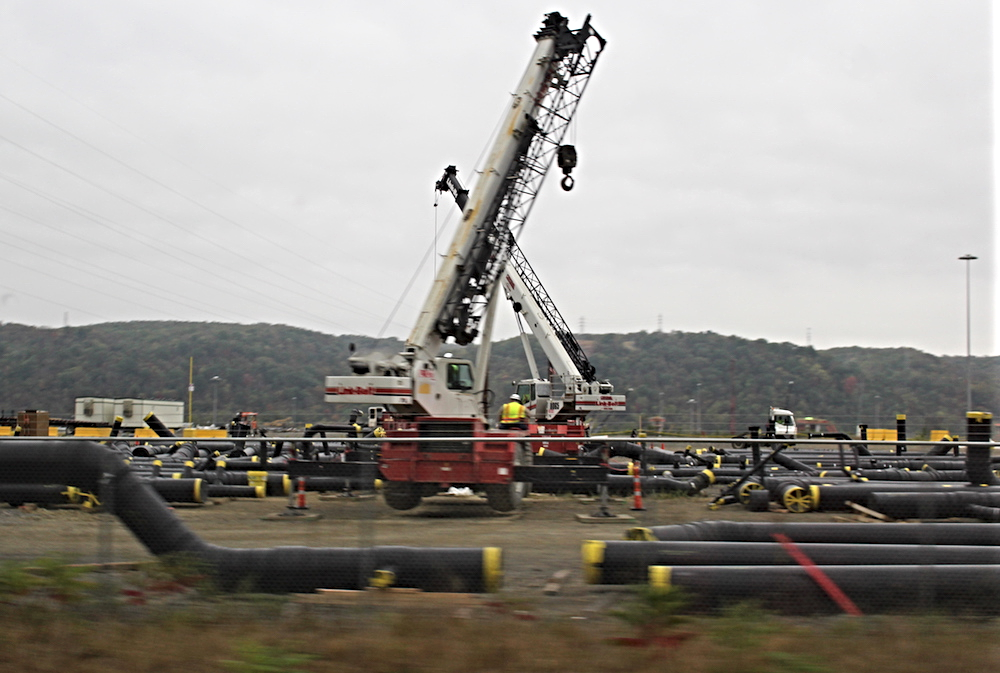
Shell described its plans for an ethane cracker plant in Pennsylvania (shown here, under construction) at this year’s DUG East conference. Credit: Ashley Braun, DeSmog
Shell’s cracker plant won’t rely on an ethane storage hub because the company has signed 10 contracts with drillers to supply ethane via a planned ethane pipeline, Denise Brinley, senior energy advisor for the Pennsylvania Department of Community and Economic Development, told the DUG East conference.
“So that particular way of doing business is specific to Shell,” she said, “but we know to have additional potential ethane crackers or additional petrochemical processing that we do really need to have storage as a component to that, to go beyond Shell.”
Crash Course for Ohio Regulators
The largest petrochemical “gas station” currently planned for the region is Energy Storage Venture’s Mountaineer NGL storage site, to be built in Monroe County, Ohio. Backed by investment from Goldman Sachs, the $500 million site will employ 15 to 20 people once it’s finished. Its proposed site is about eight to 10 miles away from the place where Thailand-based PTT Global Chemical is exploring building the region’s second ethane cracker in Belmont County, Ohio.
Mountaineer initially will hold roughly 3 million barrels of natural gas liquids like ethane, company officials say, in six underground caverns. They explain that the storage areas will be carved out by injecting water into salt deposits below the banks of the Ohio river, over 6,000 feet below the surface. The salty brine that rises back up to the surface — 3.2 billion barrels of it — will be stored in massive pools next to the river.
Five million people rely on the Ohio River, including the cities of Cincinnati and Louisville, for drinking water.
State regulators in Ohio — which has suffered earthquakes from the underground injection of shale wastewater for disposal — have little experience with that sort of construction — so little that company officials produced video animations for those regulators, showing them how the storage site is designed to work — at least in the abstract.
Permits for Mountaineer’s brine storage ponds are currently under review and the overall project is slated to be ready for use at the end of 2020, company officials said on June 18.
Mountaineer would represent a huge chunk of the 420 million barrels of natural gas liquids storage described by a U.S. Department of Energy report issued in December and praised by the industry.
It comes as the plastics and petrochemicals industry is also announcing plans to expand the Gulf Coast petrochemical corridor, with Exxon and the Saudi firm SABIC starting construction of a $10 billion site near Corpus Christi, Texas. An April, Taiwan-based Formosa Petrochemical Corp. announced another roughly $9.4 billion project in St. James Parish, Louisiana.
The efforts to shift more petrochemical manufacturing north has drawn support from a surprising place — politicians in southern states that have already felt the impacts of a local petrochemical industry.
“That’s a little-known fact, that yes, in fact, the governor of Texas supports building out a petrochemical hub in Appalachia,” Brian Anderson, director of the West Virginia University Energy Institute, said at the NEP Northeast U.S. Petrochemicals conference in Pittsburgh.
Not everyone is convinced that’s a good idea, however.
“Petrochemicals, pipelines, and plastics are not a plus for the Ohio Valley,” the Ohio Valley Environmental Coalition said in a post about Mountaineer earlier this month. “We are threatening the future of generations to come if we buy into this promise of short-term economic gains instead of realizing the disastrous long-term effects that will occur.”
Struggling to Keep Up
Much of the responsibility for controlling the environmental and public health impacts from the coming build-out will fall on the shoulders of state regulators.
“We’ve had some — I wouldn’t say issues, but the state of Ohio really doesn’t have regulations for NGL storage or brine ponds and similar to states like — or not similar, not similar to states like Kansas or Texas where you can pull up the regulations on a website,” Tim Hanley of Energy Storage Ventures said at the NEP Northeast U.S. Petrochemicals conference. “We’re working through those regulations with the ODNR [Ohio Department of Natural Resources] and we’re just trying to satisfy their safety requirements right now.”
A map presented at the NEP Northeast U.S. Petrochemicals conference shows parts of Pennsylvania, Ohio, and West Virignia where ethane storage projects are “most attractive.” Credit: © 2018 Sharon Kelly.
These sorts of sites are not without their risks. An investigation by New-York based Toxics Targeting uncovered a string of problems at a smaller NGL storage site in Bath, New York, including a 2009 fire and explosion that happened as the flammable liquids were loaded from rail cars and as drilling, believed to be for a new storage cavern, was underway.
In Ohio, Enterprise Products Partners’ Todhunter storage site, which was drilled into shallower rock (not salt), was shut down in 2012 after a major propane leak.
“Since that time propane has been detected in the soil on our property,” Vice President Russell Kovin wrote in a December 13, 2013 letter to business partner Duke Energy. “As of this date, we have been unable to successfully test these caverns, and it is apparent to Enterprise that it will be unable to satisfy the government agencies with respect to the caverns [sic] integrity.”
In addition to the risk of fire or ground contamination, Mountaineer also faces issues related to flooding.
“All critical above-ground infrastructure is above the 100-year flood plain,” Farrell, the Civil and Environmental Consultants project manager, said at the Northeast U.S. Petrochemicals conference.
During that same conference, another panelist called attention to flooding risks even when using a 500-year floodplain map as a guideline.
“Don’t underestimate the significance of the floodplain, not only does it flood … but that soil may not support heavy assets being built on top of that too, so just be careful of how close you get to the river,” Kevin McGowan, president of McGowan Corporate Real Estate Advisors, told the gathered petrochemical industry representatives. “These floodplain maps are always subject to interpretation and you’d be surprised how often the 500-year floodplain gets hit.”
That’s consistent with a 2017 report by the U.S. Army Corps of Engineers, which found that flooding in the Ohio River basin is likely to become more extreme as a result of the changing climate and the increased rain and snowfall that will cause.
An additional layer to the problem is that the Trump administration has resisted efforts to make floodplain maps include the known impacts of climate change, Andrew Rosenberg, director of the Center for Science and Democracy, told DeSmog. And state regulators generally have fewer resources to police industry than the federal Environmental Protection Agency’s staff would have.
“I’m really worried when you see this kind of very large investment and then we try to play catch-up on evaluating what the risks and the impacts on people are,” he said. “The states usually don’t really have the capacity to address all of the concerns that come up.”
“We see massive public health issues with the existing petrochemical hubs,” he added, “which is not to say that we should just push everything onto those communities, but we need to deal with those public health crises in cancer alley in Louisiana and Houston and Richmond, California, and Delaware and New Jersey in the Northeast.”
Main image: Shell’s ethane cracker petrochemical plant under construction in Pennsylvania in October 2017. Credit: Ashley Braun, DeSmog
Subscribe to our newsletter
Stay up to date with DeSmog news and alerts


